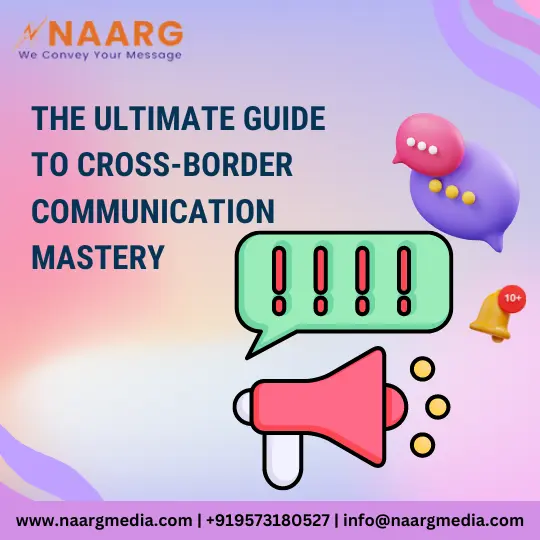Have you ever heard about the Hallyu Wave, also known as the Korean Wave? It became much more popular during the COVID-19 pandemic. It refers to the global spread of South Korean culture through entertainment like music, television dramas famously known as K-dramas, and the famous K-pop. Now, you must be wondering why we are talking about the Hallyu wave all of a sudden.
Well, to help you understand cross-border communication. So, the connection between the Hallyu wave and cross-border communication is significant. As time passes and South Korean cultural exports continue to captivate audiences globally, understanding and effectively communicating across cultural boundaries becomes essential. The Hallyu wave is one of the many examples of cross-border communication.
The fact that we can effectively communicate across borders is an invaluable skill. However, the nuances of culture, language, and context can present unique challenges to this information exchange across borders.
Want to learn more about cross-border communication mastery? Then, stick to this blog till the very end to understand cross-communication. And how to create successful cross-border communication. So, let’s get started.

Importance of Cross-Border Communication
The importance of communication cannot be underestimated. It is of paramount importance in our increasingly interconnected world. We live in a world where business transactions, interpersonal relationships and interactions, and cultural exchanges transcend geographical boundaries. So, the ability to communicate effectively across borders has become indispensable.
Effective communication fosters mutual understanding, facilitates collaboration, and builds trust among organizations and individuals from different cultural backgrounds. It enables your business to expand into new markets, manage diverse teams, and negotiate international deals with efficiency. Communication is integral to addressing global challenges and advancing shared goals like environmental sustainability, public health, and human rights.
So, by facilitating collaboration and knowledge sharing across borders, effective communication enables us to work together towards common objectives, leveraging collective expertise and resources for positive change on a global scale. In recent times, cross-border communication has become not just a practical necessity but also a catalyst for progress, cooperation, and understanding in an increasingly interconnected and interdependent world like ours.
Moreover, we are in an era of rapid globalization, so mastering cross-border communication will cultivate cultural sensitivity, empathy, and respect for diversity. Paving the way for meaningful connections and harmonious relationships on a global scale.
Key Factors to Consider in Cross-Border Customer Communication
When your business is engaging in cross-border communication, several crucial factors need to be considered to ensure effective communication and positive outcomes.
1. Cultural Sensitivity
The first and foremost thing is to understand and respect cultural differences in communication styles, etiquette, and customs to avoid misunderstandings and build rapport with customers from diverse cultures and backgrounds.
2. Language Proficiency
You need to ensure effective communication by utilizing language services, multilingual staff, or translators to bridge language barriers and your messages accurately and effectively.
3. Local Laws and Regulations
Always familiarize yourself with local regulations governing communication practices, data privacy laws, and consumer protection laws to ensure compliance and trust with customers.
4. Time Zones and Scheduling
You need to consider time zone differences when scheduling meetings, sending communications, and providing customer support to accommodate the needs and preferences of customers in different regions.
Careful consideration of these key factors can help your business optimize customer communication and cultivate lasting relationships with your global clientele.

How to Create Successful Cross-Border Communication?
Creating a successful cross-border communication strategy requires careful planning, cultural sensitivity, and adaptability. So, here is a step-by-step guide to help you create successful cross-border communication and also navigate the complexities of communication effectively.
1. Research and Understand Target Markets
Always begin by conducting thorough research on the linguistic, cultural, and socio-economic characteristics of your particular target markets. Also, understand the preferences, values, and communication norms of your target audience in each region to tailor your approach accordingly.
2. Language Proficiency
You need to ensure that your communication materials are translated accurately and professionally into the target languages spoken by your target audience. Invest in language training for your team members who are involved in cross-border communication to ensure effective verbal and written communication.
3. Cultural Sensitivity
Make sure to cultivate cultural sensitivity and awareness among your team members to avoid any misunderstandings and cultural faux pas. Consider cultural nuances in greetings, gestures, and communication styles to demonstrate respect and build rapport with your target audience.
4. Adapt Communication Channels
Identifying the most effective communication channels and platforms that are preferred by your target audience in each region can be beneficial. It can be email, social media, messaging apps, or localized platforms. You need to tailor your approach to meet the technological preferences and infrastructure of different regions.
5. Monitor and Adapt
Lastly, you need to continuously monitor the effectiveness of your cross-border communication efforts through feedback, analytics, and performance metrics. So, always be prepared to adapt your strategies and tactics based on your evolving market dynamics and customer preferences.
By following all these steps and prioritizing cultural sensitivity and language proficiency, you can create a successful communication strategy that fosters engagement, trust, and long-term relationships with your global audience.
So, are you ready to master cross-border communication and expand your global reach? Let our professional translation services guide you through. Start your journey to communication mastery today with Naarg Data Media Services.
Contact us today to learn more about our services.




